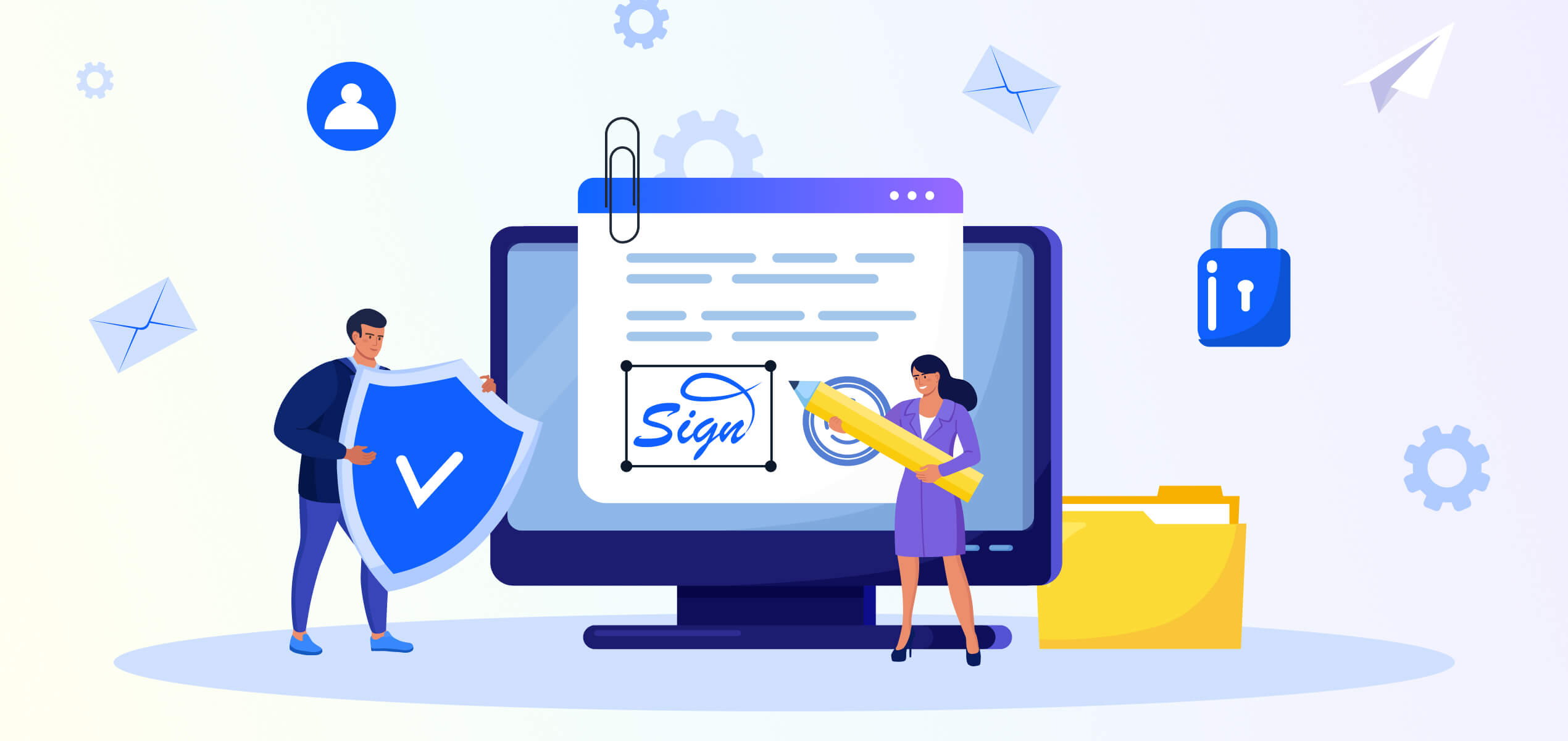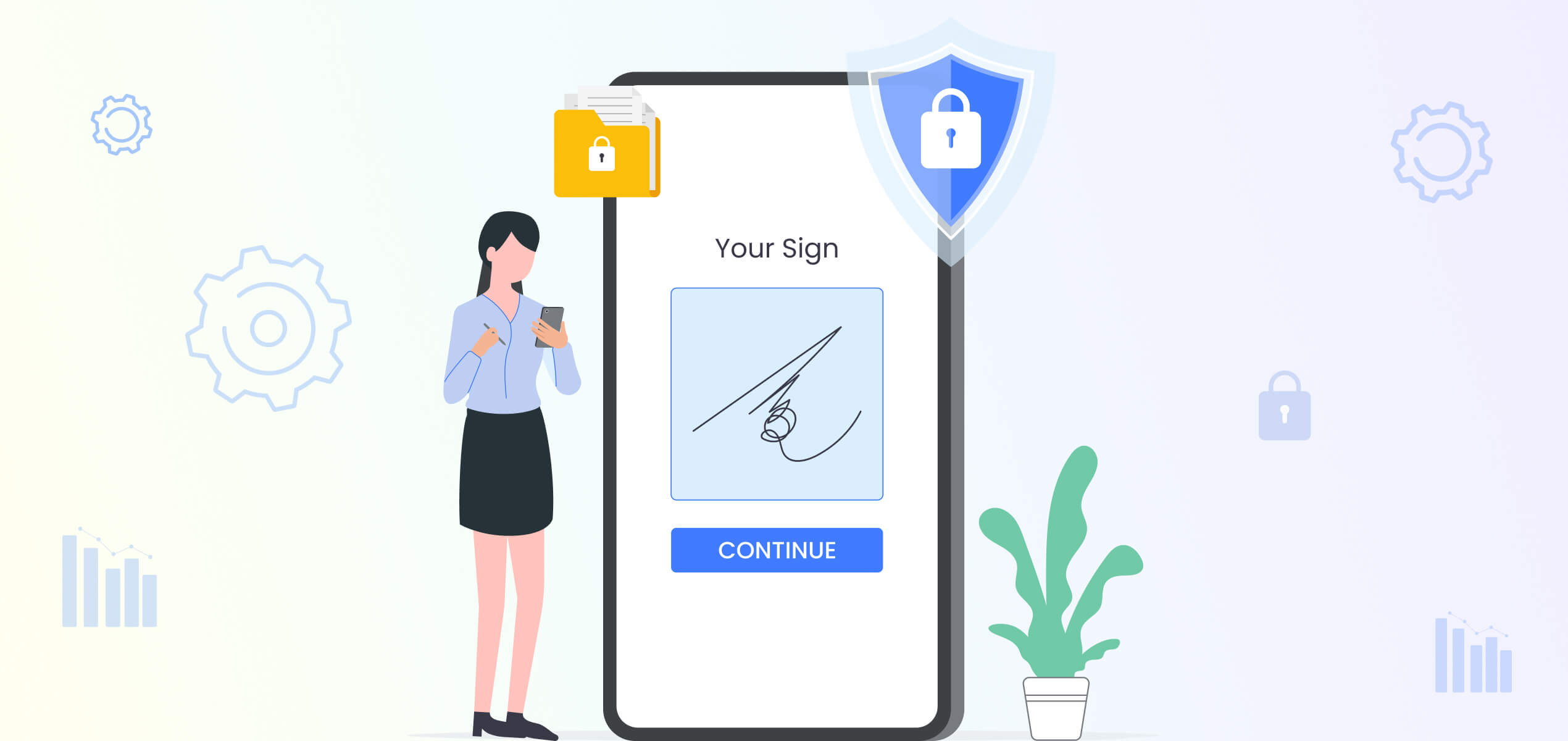In the age of digital transformation, governments and public sector agencies around the world are seeking ways to improve efficiency, reduce costs, and enhance public service delivery.
One of the most powerful tools driving this transformation is the use of digital signatures. By enabling a more secure, efficient, and paperless way to process approvals, digital signatures are revolutionizing how governments and public sector organizations handle essential documents.
If you’re a public sector employee aiming to streamline processes and boost efficiency, you’ve come to the right place. Let’s look at the core benefits of digital signatures, how they work, and why they are essential for a modern, efficient government.
What are Digital Signatures?
From the front end, digital signatures may look like typed names, images of signatures, or handwritten signatures on an online document. However, behind the scenes, digital signatures are powered by sophisticated cryptographic techniques.
They use a combination of private and public keys to authenticate the signer’s identity and ensure the document’s integrity. This process creates a unique, tamper-proof “fingerprint” for the document, which can be used to detect any changes made after it has been signed.
While they appear simple, digital signatures provide a high level of security and trust, making them more than just a basic electronic signature.
The Need for Digital Signatures in Government Approvals
Government and public sector agencies are typically responsible for handling a wide array of documents, from permits and licenses to contracts and regulatory approvals. However, the traditional approach to signing and processing these documents – paper-based signatures and physical file handling – can be slow, cumbersome, and prone to errors. This can lead to delays, inefficiencies, and an increased risk of document loss or unauthorized alterations.
In many cases, these inefficiencies translate to long wait times for citizens, frustrated public servants, and a bloated administrative process. By integrating digital signatures into government workflows, agencies can eliminate many of these bottlenecks and improve the overall speed and security of their processes. Here’s how:
1. Speeding Up Government Approvals
One of the most obvious advantages of using digital signatures in the public sector is the ability to speed up document approval processes. Traditionally, government approvals could take days or even weeks due to the manual handling of documents, the need for physical signatures, and the back-and-forth involved in sending documents via postal mail or email.
With digital signatures, documents can be signed instantly, regardless of the signer’s location. Public sector workers can electronically approve forms, contracts, applications, and other documents, reducing the time it takes to move projects and requests through the approval pipeline.
For instance, imagine a situation where a contractor submits a permit request to a government agency. With digital signatures, the document can be reviewed and signed in minutes by multiple officials, and the approval can be sent back to the contractor the same day. This speed not only improves operational efficiency but also accelerates the delivery of services to the public.
2. Improving Document Security and Authenticity
Security is a primary concern when dealing with sensitive government documents, as any alteration or fraud can have significant legal and financial implications. Digital signatures provide a higher level of security compared to traditional handwritten signatures, making them a powerful tool for safeguarding official documents.
When you make a digital signature, it is created using private key encryption, which ensures that the signature is uniquely tied to the signer. Any attempt to alter the document after it has been signed invalidates the signature, making it immediately clear that the document has been tampered with. This protects government agencies from fraud and ensures the authenticity of the documents they process.
Additionally, digital signatures can be used to create a secure audit trail. Every time a document is signed, a time-stamped record is created, showing who signed the document and when. If there is ever a dispute regarding the authenticity of a document or the approval process, the digital signature provides a clear and secure record.
3. Streamlining Document Processing
Government agencies deal with large volumes of paperwork daily. Whether it’s applications for permits, regulatory filings, or contractual agreements, the sheer volume of documents can be overwhelming. Manual processing is time-consuming, prone to errors, and often leads to delays in response times.
By adopting digital signatures, government agencies can transition from paper-based workflows to digital ones, streamlining the entire document processing procedure. With digital workflows, documents can be routed automatically to the appropriate departments or officials for approval, eliminating the need for physical transfers or mail. Documents can be signed, verified, and archived electronically, reducing the risk of misplacement or lost records.
4. Reducing Costs and Environmental Impact
Processing paper-based documents in the public sector can be costly. Printing, mailing, filing, and storing physical documents require significant resources. These costs add up, especially for large-scale operations or when multiple copies of a document are needed.
With digital signatures, government agencies can drastically reduce these costs. There’s no need for paper, ink, postage, or physical storage, making the entire document management process more cost-effective and environmentally friendly.
5. Legally Binding and Globally Recognized
Many governments and international organizations have recognized digital signatures as legally binding, making them a reliable and trustworthy method for signing official documents. The legal validity of digital signatures is ensured by robust regulations, such as the EU’s eIDAS regulation, which provides a clear framework for their use in cross-border transactions and public sector activities.
6. Facilitating Remote and Mobile Access
Whether an official is working from home, on the go, or at a remote office, they can make a digital signature and approve documents electronically without needing to be physically present.
This flexibility is especially important for handling urgent approvals or time-sensitive documents. It allows government employees to continue their work without the need to travel or be in a specific office, ensuring that operations remain smooth even in challenging circumstances, such as during a public health crisis or in remote regions with limited infrastructure.
In conclusion, digital signatures are more than just a technological upgrade for the government and public sector—they are a vital tool for transforming operations and enhancing the overall quality of governance. By streamlining processes, ensuring security, and fostering transparency, digital signatures pave the way for a more efficient and responsive public sector. As digital transformation continues to shape the future of government services, adopting digital signatures will empower agencies to deliver faster, more reliable services to citizens, ultimately building a more secure and efficient public administration.
How to Get Started with Digital Signatures in the Government
Getting started with digital signatures is easier than you might think! Here’s a simple guide to help you integrate them into your public service workflow:
- Choose a Digital Signature Provider: Start by selecting a trusted digital signature
platform. Some popular options include Adobe Sign, DocuSign, and FlexiSign. Many of these platforms offer
free trials, so you can test their features before committing. - Create an Account: Sign up for an account with your chosen provider. Most platforms will require you to provide some personal or business details to verify your identity.
- Upload Your Document: Once you’re set up, upload the document you need to sign. These platforms typically support various file types like PDFs, Word documents, and images.
- Sign the Document: Depending on the provider, you can either draw your signature, type it out, or upload a scanned version. Some platforms even let you use a pre-saved digital signature.
- Verify Your Identity: Many platforms require an extra layer of security, such as two-factor authentication (2FA), to verify your identity before you can sign.
- Send or Store the Signed Document: After signing, you can securely send the document to the intended recipient or store it for your records. The digital signature will ensure the document’s authenticity and integrity.
- Maintain Records and Audit Trails: Most platforms like FlexiSign already provide an audit trail, keeping track of who signed the document, when, and where. This provides an extra layer of security and accountability.
The Power of Digital Signatures in Government
As governments continue to modernize their operations, digital signatures will play an increasingly central role in driving public sector efficiency. With these benefits in mind, it’s clear that digital signatures are not just a tool for digitizing documents; they are a critical enabler of modern, secure, and efficient governance.
FAQs: Simplifying Government and Public Sector Approvals with Digital Signatures
Digital signatures offer numerous benefits, including:
- Faster approvals: They eliminate delays caused by physical document handling.
- Enhanced security: They protect documents from fraud and tampering.
- Cost savings: They reduce the need for paper, printing, and mailing.
- Environmental benefits: They contribute to a more sustainable, paperless workflow.
- Legally binding: Digital signatures are legally recognized and compliant with international standards.
Yes, digital signatures are highly secure. They use private key encryption to link the signature uniquely to the signer, ensuring that any attempt to alter the document invalidates the signature. This protects the document from tampering and fraud.
Yes, digital signatures are globally recognized and legally binding in many jurisdictions, including the EU and the US, under regulations like eIDAS. This makes them a reliable tool for cross-border transactions and international agreements.
Digital signatures can be used for a variety of government documents, including contracts, permits, regulatory filings, and approval forms. They can be applied to any electronic document that requires authentication or approval.
Yes, digital signatures are legally binding in many countries, supported by regulations like eIDAS in the EU. They provide a secure, reliable, and recognized method for signing official documents in government and public sector operations.




